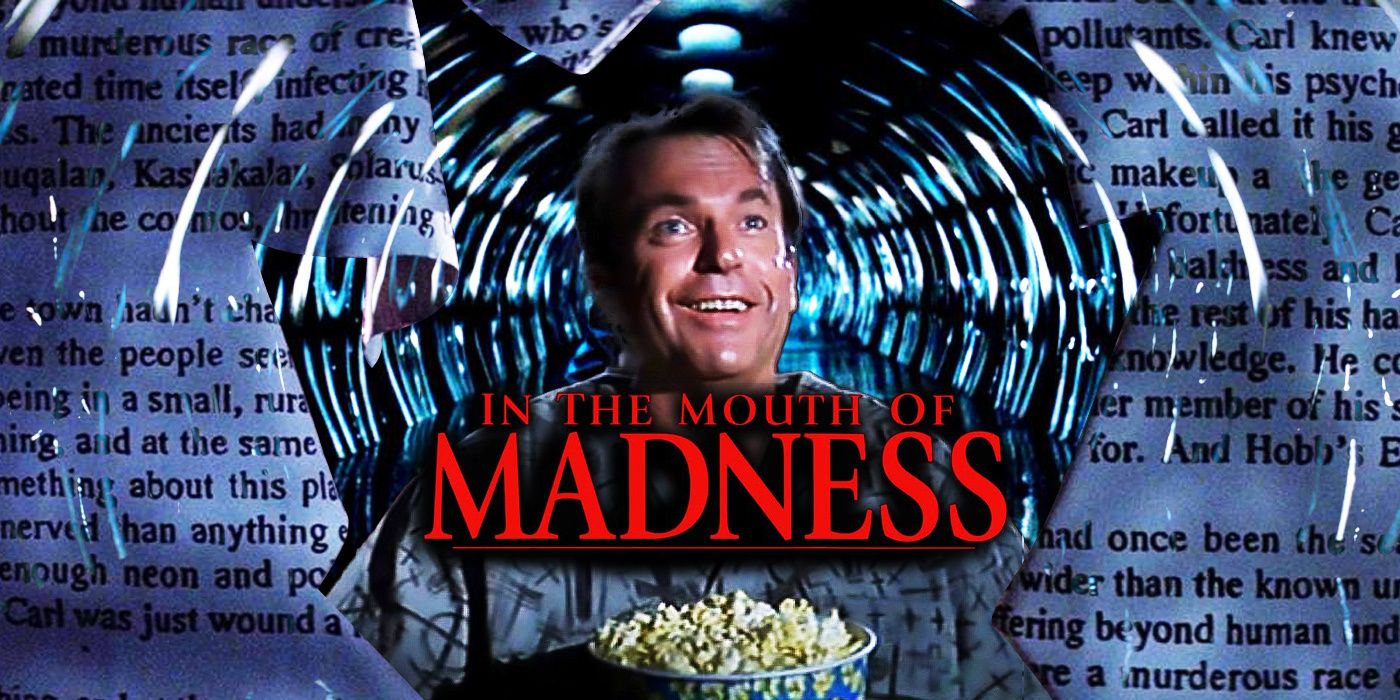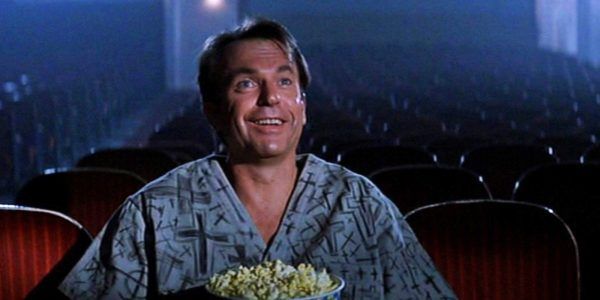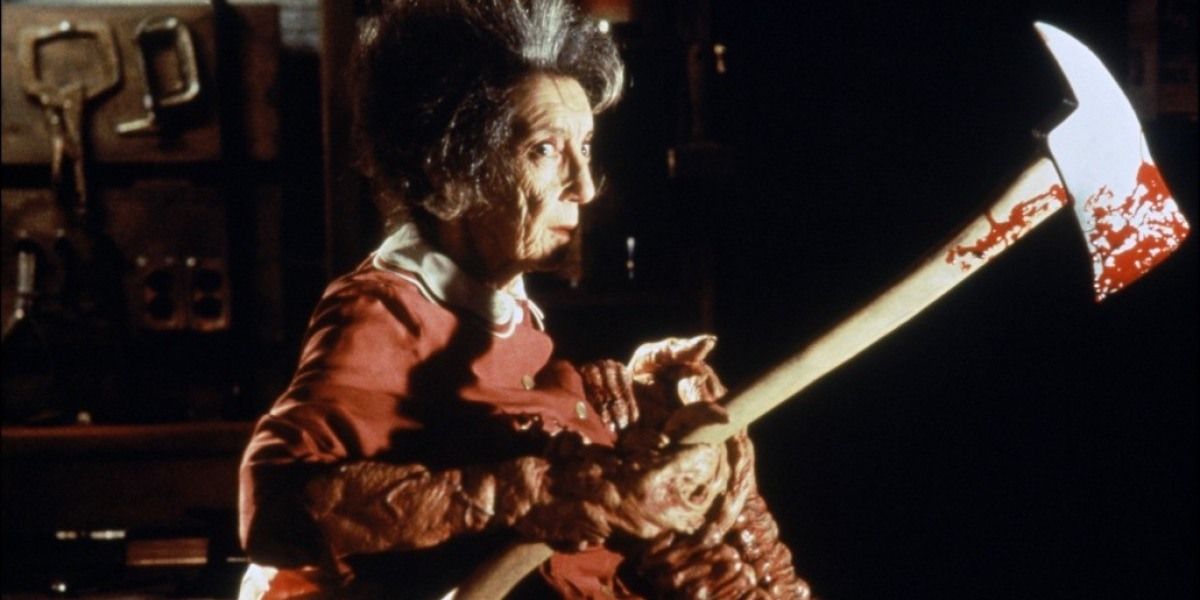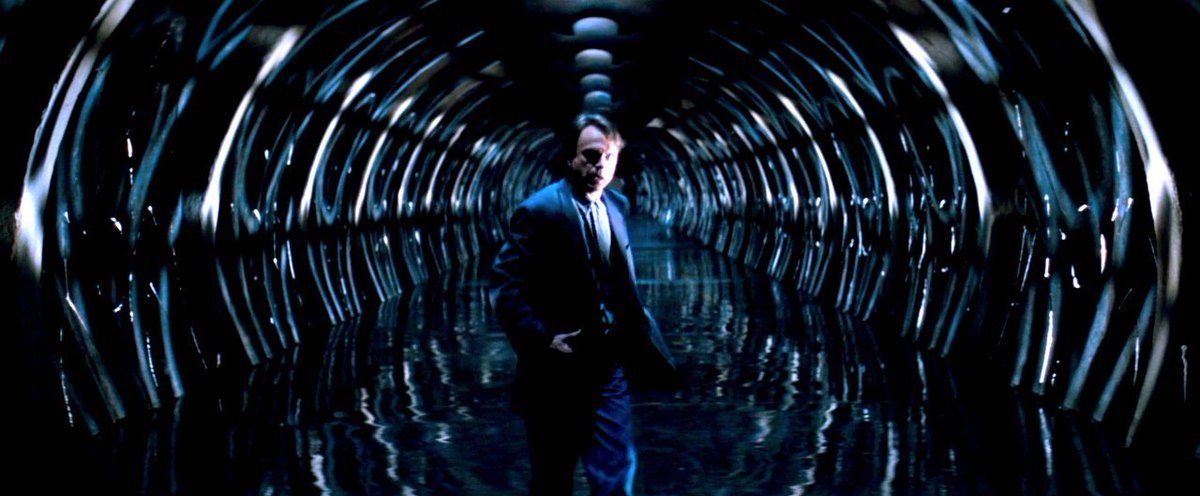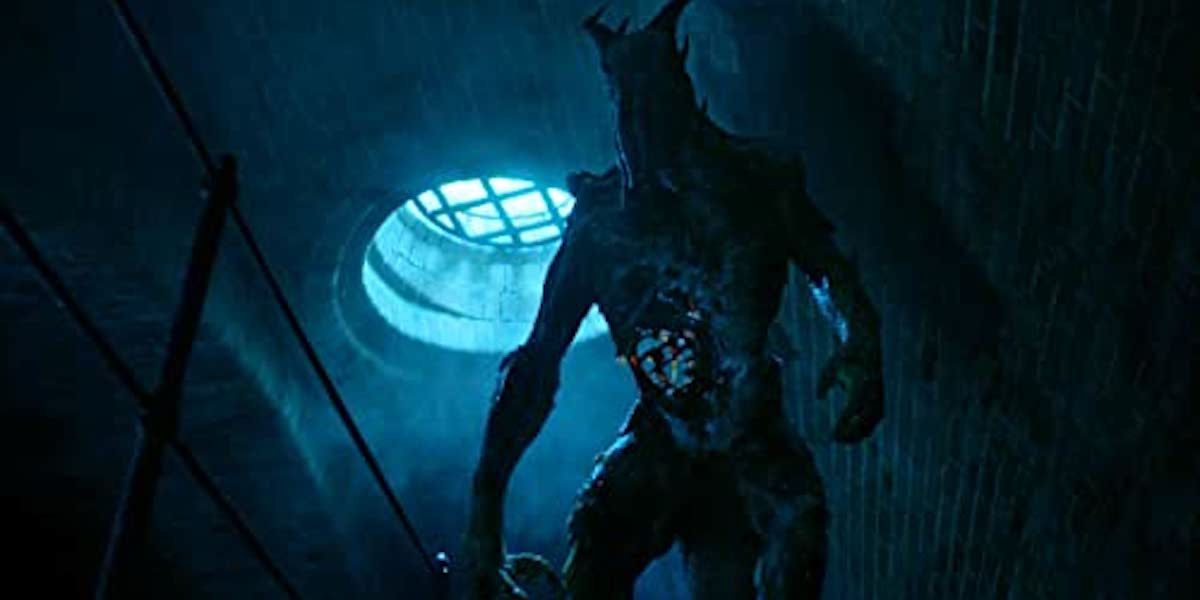It’s rare for a John Carpenter film to be a hit right out of the gate. Films such as The Thing, Assault on Precinct 13, and They Live, all now considered amongst his finest work, received mixed or even flat-out hostile reactions when they first released. Thankfully the tide of history is a wonderful thing, and Carpenter is now rightfully regarded as one of the greatest directors in the horror and sci-fi genres. But with a filmography where the vast majority of its entries can be considered cult classics, it’s not surprising that a few are still struggling to earn their place amongst the pantheon of his work.
Case in point, In the Mouth of Madness, Carpenter’s 1994 tribute to H. P. Lovecraft by way of an extended pitstop into the bloodcurdling world of Stephen King. The film, which serves as the final entry in Carpenter’s Apocalypse Trilogy following The Thing and Prince of Darkness, follows John Trent (Sam Neill) as an insurance investigator in his search for missing horror novelist Sutter Cane (Jürgen Prochnow). Accompanied by Cane’s editor Linda Styles (Julie Carmen), the pair arrive in the mysterious New England town of Hobb’s End and quickly descend into a terrifying nightmare of missing children, crazed mobs, and creatures from beyond the Earth itself, and suddenly Cane’s novels bear a much stronger resemblance to fact than fiction. The film received mixed reviews upon release, with critics generally praising the special effects and acting but criticizing the screenplay as confusing, but even before the year was out it had begun to earn a reprisal. The prestigious French magazine Cahiers du Cinéma included it on their annual top 10 list, and as with most Carpenter films, status as a cult favorite amongst horror aficionados soon followed. Despite this it is still rarely considered amongst the greatest of Carpenter’s work, often being shadowed by the previous films in the Apocalypse Trilogy. A great shame, as In the Mouth of Madness is not only better than both, but it stands as one of the best depictions of Lovecraftian horror in cinema.
One of Carpenter’s greatest skills as a filmmaker, and one is not praised for enough, is how economical he is. In the time it takes Ari Aster to tell Midsommar, his breakup drama disguised as a horror film, Carpenter could have rolled the credits on one film and be reaching the second act of the next. Horror films have a tendency to strive for lowest common denominator scares, films that are willing to take their time are far from a bad thing, but the efficiency with which Carpenter constructs his films are something to admire, and In the Mouth of Madness is the perfect example. It’s a film overflowing with ideas, jumping from one thought to the next without ever feeling overwhelming, all packed into a tight ninety-minute runtime that ensures it doesn’t outstay its welcome.
Right from the word go Carpenter’s skills are evident. Following the Metallica-esque opening theme that wastes no time getting the adrenaline pumping, we jump straight into Trent being thrown into a psychiatric hospital while he shouts paranoid ravings even the most deranged of individuals would find mad. Whispers about an unspecified disaster striking the outside world flutter between the staff, but these are silenced by the arrival of Dr. Wrenn (David Warner) who intends to find out what sickness has befallen the previously straight-laced John Trent. It’s an opening ripped straight from a Lovecraft story, the first in a long line of tributes to the horror writer, but it’s also an opening that hooks even the most casual of viewers. Barely five minutes have passed, and already the audience have an entire page of questions that demand answers, and it won’t be long before that notepad will be able to fill an essay.
Even when the film flashes back to a simpler time, Carpenter ensures the viewer never forgets what they’re watching. One of the film’s most effective moments comes in an early scene between Trent and a colleague while they eat lunch in a café, a meal cut short by a crazed axe-wielding maniac who attempts to kill Trent before he is shot dead by police. The shot of him forcing his way through a crowded street moments before, framed through the café’s window as Trent and his friend remain blissfully unaware of his presence, is chilling stuff, but it’s also a moment that sets the tone for this world perfectly. People are going mad, with random acts of violence breaking out all across the world, and it appears that Sutter Cane is to blame for it all.
Cane’s books have a tendency to be a bit much for his more weak-willed readers, as Arcane Publishing director Jackson Harglow (Charlton Heston) proudly states during his meeting with Trent. Indeed, the man who attempted to kill Trent a few scenes earlier was none other than Cane’s agent, driven insane by reading an unfinished draft of his most recent work (which, coincidentally, is also titled In the Mouth of Madness). It all seems a bit much for Sam Neill’s no-nonsense investigator who is convinced the whole thing is just an elaborate marketing campaign, a theory he sticks with even after he arrives at the sinister town of Hobb’s End. Neill gives the most underrated performance of his career here, seamlessly moving from pragmatic to psychotic without ever losing a shred of credibility. When even he starts to believe in the horrors occurring around him, you can be damn sure the audience does too.
Despite Carpenter’s reputation as the master of horror, it’s rare to find one of his films being featured alongside The Exorcist or The Texas Chain Saw Massacre as one of the scariest in the genre, but for a good reason. While Carpenter’s films hardly make for the most pleasant of viewings, he also understands just how much fun a horror film can be, reveling in the unadulterated joy of watching creatures from beyond our understanding cause havoc on the world in a way that ensures your pulse never drops below an above-average level, but also won’t give you a sleepless night when you’re done. It’s a talent many horror directors of today have forgotten in the race to create the latest ‘scariest film ever’, and it’s also a talent on full display here. Hobb’s End is simply one of the greatest settings in a horror film, a haunted theme park of terror where an exciting new ride lurks behind every corner, all the while being guided by a learned conductor who makes the whole endeavor look effortless. Everything is memorable. Being introduced to the kindly old woman who runs the hotel is one thing, but learning what goes on between her and her husband in their basement is something no viewer will forget in a hurry. It’s a setting that conjures images of Lovecraft’s Innsmouth or Dunwich, but with just enough of a unique edge so you never forget this is Carpenter’s nightmare.
By the time Trent finally locates Sutter Cane, hold up in the church that dominates the town’s skyline as though Hobb’s End was nothing more than an ant beneath the sun’s shadow, he’s just as insane as a character from one of his books. Which is funny, because Trent is a character in a Sutter Cane book, the same novel that sent his agent mad and which Trent has been searching for this whole time. Trent refuses to believe it, but soon the cracks start to appear, and then all hell breaks loose. The film’s final act, an assault of bizarre imagery and gruesome practical effects ripped straight from The Thing, sees Carpenter slamming his foot down on the accelerator and throwing anything and everything at the viewer. Whereas previous Carpenter films had an obligation to remain somewhat in the realm of reality, the metafiction tale being presented here has no such limitations, and Carpenter utilizes it to full effect.
The commentary hidden throughout the film conjures images of Carpenter’s 1988 classic They Live, which examined the way mass media influenced the public to conform to the will of corporations. In the Mouth of Madness continues this theme, with Heston’s publishing director purposely stoking fears about how Cane’s novels aren’t safe for some readers for the sake of profit, with Cane’s rapid fanbase eating up their corporate-approved propaganda without even realizing it. But the film also raises questions about the relationship between an artist and their fans. Does an artist have a responsibility to create art that is safe for public consumption when its negative effects are so well documented, or are they responsible to their art and their art only? On the opposite side, is it safe for people to idolize celebrities they haven’t even met when they may not have their best interests at heart? Carpenter is mindful to never allow such questions to intrude on the Lovecraftian/Stephen King fun on display, with them largely being placed in the background as to not distract viewers who just want a more visceral experience, but their inclusion raises the film above being just another pulpy horror story that exists solely to frighten and then be immediately discarded. Ultimately In the Mouth of Madness is a cautionary tale against blindly swearing loyalty to something (be it a brand, a company or a person) without fully examining the situation first, leaving yourself open to harmful fantasies which could have dire consequences. The film may ever so slightly exaggerate to prove its point, but it’s a lesson that could be applied to many things and an important one for people to know.
The film’s final scene sees John Trent, now free from the asylum after all its staff mysterious vanish, wandering through the streets of an abandoned city. Car radios play broadcasts about monsters taking over the world, but Trent pays them no attention. Instead, he heads straight to the cinema. Today’s film is called In the Mouth of Madness, a 1994 horror film directed by John Carpenter, and it looks awfully similar to a certain other film with the same name. As Trent watches himself on the big screen, munching away on his popcorn, he begins to laugh. And laugh and laugh and laugh. It’s the perfect image to end on. For a film that’s just one big celebration of all things horror, seeing its main character laughing hysterically at a montage of its greatest moments feels like going back to the buffet for one last round before calling it quits. It’s also a wonderfully meta ending, and it’s easy to imagine John Carpenter himself taking the spot of Sam Neill, patting himself on the back for a job well done. For a film like this, he’d certainly have earned it.

